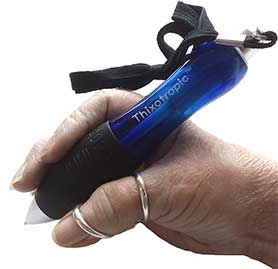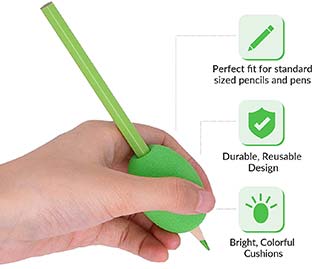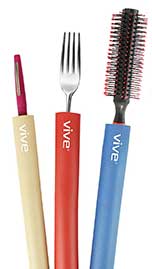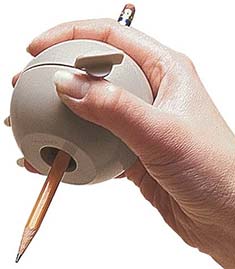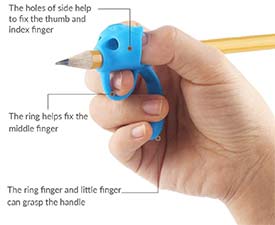Arthritis can contribute to movement restrictions and joint pain in the hands which can make writing uncomfortable and difficult. By using adaptive arthritic writing aids, it is possible to decrease discomfort and be able to write for longer periods of time with greater ease.
These are some of the adaptive writing equipment for when arthritis affects the fingers and hands:
Best pens for arthritic thumbs
The best pens for arthritic thumbs is one that has a large surface area to grip and hold onto.
For example, a super fat pen has an enlarged tip allowing for an easier time to grasp it and use it to write. This assistive aid can be one method to reduce fatigue and minimize hand cramps that are experienced with arthritis.
Pen and pencil grips for arthritis
Pen and pencil grips can be another way to make writing easier and more comfortable. By adding grips to existing writing utensils, the area that is grasped during writing becomes larger in size and easier to hold.
Because pen and pencil grips come in varying shapes and sizes, different brands may need to be tried before finding the one that is most suitable to one’s individual comfort needs.
These are some of the most common arthritis gripping options for writing:
- Egg shaped handwriting grips – an enlarged bulb that slips over the tip of a pen or pencil to increase the size of the grasping area on a writing utensil
- Cushioned pen grip – a soft contoured grip that helps position the fingers for maximal comfort
- Foam tubing grips – create a larger built up handle by cutting the tubing into the required size
Arthritis pen holders
For some individuals, holding a pen or pencil even with an additional grip may not be sufficient in reducing pain during writing. This can be related to many factors ranging from hand deformities to joint restrictions.
In these situations, it may be more appropriate to use a pen holder or adaptive writing aid that takes the needs of arthritis sufferers into consideration.
These are the most common pen holding options for arthritic fingers and hands:
- Arthritis writing ball – secure a pen or pencil into this ball, then hold it within the palm of your hand while moving it around to write and draw
- Ergonomic wishbone shaped pen – place the finger in the cradle and glide your hand around on the paper to write
- One finger writing clip – insert the index finger into the clip to secure the writing aid to the hand for one finger writing
- Adaptive silicone cuff – use the straps to secure a writing tool to one’s hand, and then move the hand to write and draw without the need to grasp the writing utensil
- Universal assistive cuff – a cuff that is secured to the hand and has a sleeve where a pen or pencil is inserted to facilitate writing through hand and wrist movements
- Gripper with a finger hold – this writing aid has finger holes that can be used to insert a thumb and index finger inside for better grasping of a pen or pencil
- Grip free writing aid – provides a large surface area for the palm to hold onto while moving the base to write
- Steady handwriting base – helps to balance and guide the hand as the base slides along a piece of paper during writing
Tips for writing with arthritis in the hands and fingers
Writing is stressful on the joints and muscles and can aggravate arthritis pain. For this reason, it is important to listen to one’s body for any cues of discomfort by resting more frequently and breaking larger periods of writing into smaller sessions.
Some individuals find the use of warmth helps to loosen muscles and can reduce pain and discomfort. Using a microwavable glove with a gel pack insert to warm up the hand and finger muscles prior to writing can help lengthen writing sessions, reduce hand fatigue and minimize cramps.
Alternatives to writing for severe arthritis
For individuals where writing is no longer possible, even with the use of assistive aids or modifications, alternative communication methods may need to be explored. This can include the use of voice typing with a smartphone or speech to text software through a computer with microphone.
More professional speech to text software such as Dragon can be trained to recognize speech patterns for increased accuracy with dictating. That said, the voice typing feature on most smartphones are more than sufficient for the average individual.
